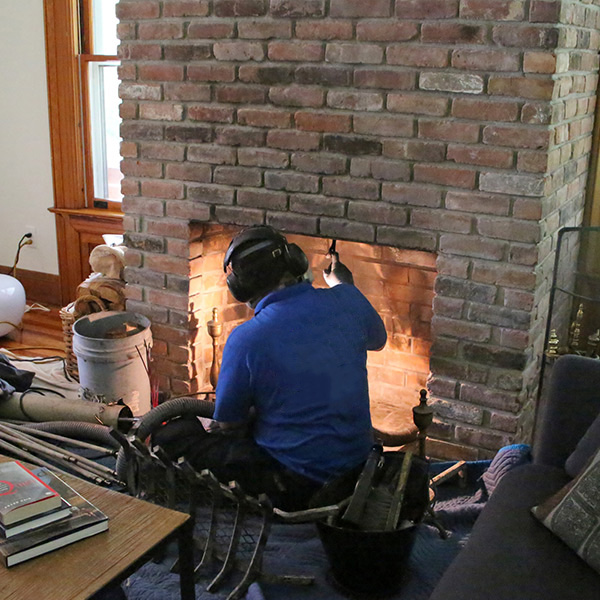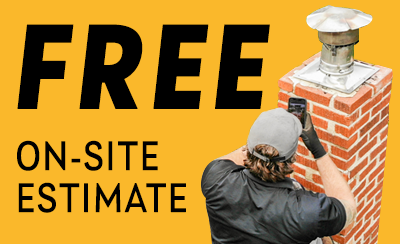What is a Damper? How Important is It?
Summer is on its way out! It won’t be long until we are bundling up against the cold and lighting up our fireplaces at night. The damper inside your fireplace is going to get a workout. It is a critical fireplace/chimney component.
Opening the damper should always be the first step you take before building a fire in your fireplace. A fireplace or chimney damper controls airflow in and out of the chimney. It plays a crucial role in preventing carbon monoxide poisoning, pest problems, and expensive energy bills.
 Where is the damper?
Where is the damper?
Traditionally, a fireplace damper sits right about the firebox in the throat of the chimney. Some fireplaces have a top-sealing damper or lock-top chimney damper. As the name implies, it is located at the top of the chimney.
You should be able to spot or feel the fireplace damper handle near the top of the firebox. This is what you will use to operate the damper. You will be able to open and close it by sliding this lever from left to right or up and down—depending on your fireplace. (You can check out this video by the Chimney Safety Institute of America, CSIA, for tips on how to find the damper and use it.)
What are a fireplace damper’s four jobs?
#1. Venting Smoke
A blazing fire produces smoke and carbon monoxide (a deadly, invisible gas). These combustion byproducts can’t escape up the chimney unless the damper is open.
#2. Facilitating Airflow
Fire needs oxygen. When the damper is open, air from outside can feed the flames, so they don’t burn up all the oxygen in the room.
#3. Keeping Pests Out
Birds, bats, and other creatures love to nest in chimneys. The damper is the last line of defense that prevents these critters from getting into your home. (The first line of defense in keeping critters out is a chimney cap or chimney chase cover.)
#4. Reduce Energy Inefficiency
You should always close the damper after you put out a fire. It seals tightly to prevent drafts and stop air-conditioned or heated air from vanishing up the chimney.
How to spot a damaged or malfunctioning damper?
Fireplaces here in upstate New York endure a lot of wear and tear from weather and use. The same goes for dampers. Fireplace dampers often become rusted or warped over time. A fireplace damper repair or replacement may be necessary if yours is damaged or malfunctioning. Sometimes, all you need to get it working again is a professional chimney sweep. Creosote buildup can seal the damper shut or block it open. You should not light up your fireplace until a CSIA-certified chimney professional has inspected it and fixed the problem!
 Look out for these warning signs:
Look out for these warning signs:
- Smoke billowing out of the fireplace instead of venting out the chimney.
- A stuck damper handle.
- A lot of scraping/rattling noises when you open or close the damper.
- Critters or animal droppings and nesting materials in or around the fireplace.
- Higher energy bills than usual and your home feeling drafty even when the damper is in the closed position.
- Pieces of debris or water in the firebox.
If you notice any of these issues, call Felgemacher Masonry & Chimney to schedule a chimney inspection! Chimney dampers are small fireplace components, but they play a pivotal role in fireplace safety. A fireplace damper replacement is a small cost to price to pay to prevent carbon monoxide poisoning. In addition, it may save as much or more on your energy bills once your damper seals tightly again. Our CSIA-certified chimney professionals serve customers in the Buffalo and Rochester regions, including Pittsford NY, Cheektowaga NY, Irondequoit NY, Henrietta NY, Gates NY, and Chili NY.



